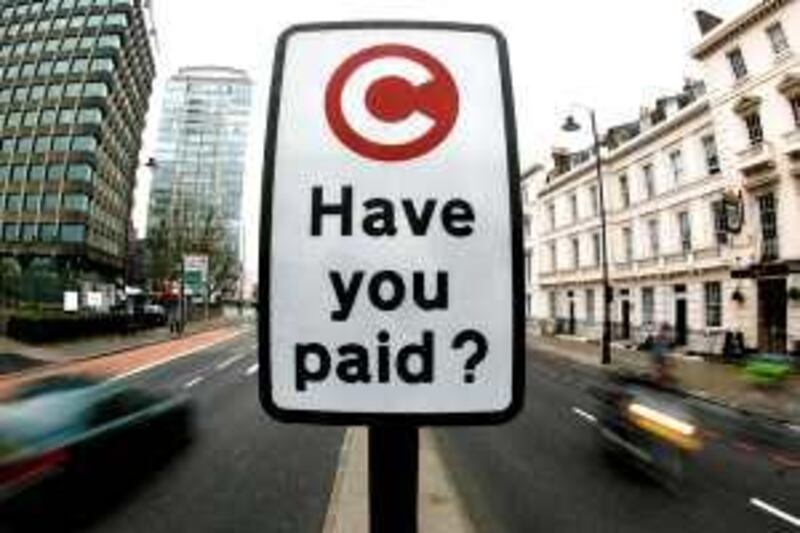The mass rapid transit that Dubai has built at a cost of US$7.6 billion (Dh27.91bn) is an engineering marvel. It has cost more than was budgeted and the line does not extend to all parts of the city yet. No trouble has been spared to make the journey comfortable; for those who don't want to rub shoulders with masses, there are VIP cars.
The famously laissez-faire city decided to invest in a public service like mass transit because another difficult-to-measure public good, speed and efficiency, was hurting. Estimates suggest that traffic jams cost Dubai some $1.4bn a year. So on one hand, the emirate is promoting itself as a delightful urban habitat, with state-of-the-art apartment blocks, townships, leisure, entertainment and retail choices.
On the other, its public bus system was not popular. Only 5 per cent of Dubai's residents used public transport, most preferring the seclusion, privacy and anonymity of private transport. Result: gridlock on the roads. By building a world-class mass transit, Dubai hopes to get its residents to leave their cars at home, or at a car park near the station, and use the mass transit. To make this work, though, Dubai will have to consider taking another step, road pricing.
In the past two decades, I have lived in two cities that have implemented ambitious road pricing schemes, Singapore and London. And it is worth recounting what distinguishes those systems and why Singapore's system works, and London's, despite massive investment, continues to let down its residents. To be sure, drivers are used to paying when they use the road. Toll plazas that charge commuters who use expressways and highways are a familiar feature in many parts of the world.
Ostensibly the money raised is used to maintain the roads, but money is fungible and can easily be shifted to other uses. In 2007, Dubai introduced the Salik system in a congestion zone that stretched from Garhoud Bridge in the north of the city to Sheikh Zayed Road near the Mall of the Emirates in the south. Dubai's Roads and Transport Authority (RTA) conducted studies that showed about 8,000 vehicles per hour crossed the bridge at peak hours and 130,000 vehicles used the Sheikh Zayed Road daily.
The expectation was the system would reduce use of the roads, and some of that happened. But to make the system work, it needs to be more widespread. Consider Singapore, which figured out the logic of the cart and the horse - what goes first. It figured out that however high a road tax it might impose, and however much it restricted the number of cars being sold in Singapore and auction entitlement certificates to own cars, Singaporeans still wanted to buy cars.
Elsewhere in South East Asia, traffic jams had converted Bangkok into the world's biggest car park; Jakarta and Kuala Lumpur were headed the same way. If Singapore wanted to continue to be the region's business hub, as Dubai has aspired to be for West Asia, it would have to make driving less attractive. It did two things: it kept cab fares low and it built an excellent mass transit network. The system reached distant parts of the city from where residents commuted to the business centres of Raffles Place and the shopping district of Orchard Road, making those distant homes attractive.
As a large part of Singapore's residential stock is state-subsidised and state-built, with buyers owning the flats on 99-year leases making it arguably state-owned, Singapore managed to decongest the city. The transit, which opened in the early 1990s was squeaky clean, air-conditioned, and efficient, like Singapore itself. It also introduced the Central Business District surcharges, as well as electronic road pricing, which made way for a more rational use of cars.
Banning cars outright was impossible; to make people realise that it made sense to keep cars at home, it was necessary to build a world-class mass transit, which is what Singapore did. London did not have that luxury. The first section of its underground network started in 1863; road pricing was introduced early this century. In that time, the Tube, as the network is known, serviced some 270 stations carrying nearly three million people daily.
In spite of the network, people continued to drive into the city, leading to traffic jams in the city centre. Ken Livingstone, a former mayor, decided to impose a tax, saying the money would be used to improve public transport infrastructure. To be sure, more bus routes were added and some services were made more frequent but the chief reason people feel tempted to drive rather than take the Tube - that it takes several connections to go from point A to B and often some part of the network is not working properly - remained.
There was not an incentive, except a feel-good moment that you were doing something for the environment when you shifted from driving to using the Tube. And at £8 (Dh46.87) a day, the cost was enough to force poorer car owners to switch and wealthy car owners to ignore its impact. The system cost a lot to maintain, which meant that a large chunk of the money raised through the system was used to maintain the bureaucracy managing it.
What can Dubai learn from these two experiments? It should capitalise on the goodwill towards mass transit by considering road pricing options. These should be such that they make commuters feel they are better off using mass transit. The trains should run frequently and offer a pleasant experience. Heavily used roads which parallel the network should be the first to implement road pricing. There should be visible improvement in public infrastructure once the road pricing system is in place, so that commuters have an incentive to continue using the network.
And stay one step ahead of demand - it is something the nimble city of Singapore understands; the ponderous megapolis London does not. And what is Dubai, if not nimble? business@thenational.ae






